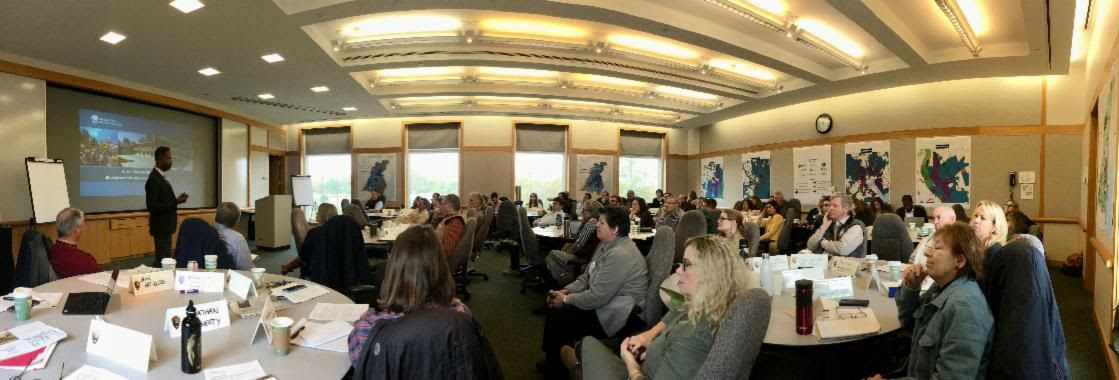Our Story
The Chesapeake Conservation Partnership grew from a one-day workshop held in 2009. A group of state and federal agencies and non‐governmental organizations assembled at the Annapolis Maritime Museum to discuss options for enhancing land conservation and public access in the Chesapeake Watershed. The recommendations formed the basis of the report Land Conservation and Public Access in the Chesapeake Bay Watershed (2009). The group met several times in early 2010 to advise on the recommended actions and draft goals of protecting an additional two million acres and adding 300 public access sites by 2025. The Strategy for Protecting and Restoring the Chesapeake Bay Watershed (2010) included these defined goals and was issued in response to EO 13508.
Since then, the Chesapeake Conservation Partnership has met annually to advance collaborative efforts, recommend policy options, and share best practices. This has led to an increasingly robust partnership, adding working groups, setting out priorities, establishing an organizational framework and more.
In June 2014, the Partnership’s land conservation and public access goals were adopted into a new Chesapeake Bay Watershed Agreement—signed by the governors of six states, the federal government, District of Columbia and the Chesapeake Bay Commission—setting an agenda for 2025.

In response to the predicted 6th extinction of species and to meet other goals, the CCP adopted in 2019, an additional goal of conserving 30% of valuable watershed lands. Additional emphasis is now being placed on more equitable conservation as well as conserving large forest tracts and wetland acres, as well as on working to exceed the original two-million-acre target, instead reaching to protect 30% of the watershed by 2030, in concert with the America the Beautiful Initiative and the Chesapeake Executive Council’s Directive No. 21-1: Collective Action for Climate Change. The Chesapeake Conservation Partnership has adopted an additional goal of permanently protecting 30% of the land in the Chesapeake Bay Watershed equitably by the year 2030. This goal was reinforced nationally by President Biden when he issued his America the Beautiful Plan calling for the conservation of 30% of lands in the US. Finally, 190 Nations at this past year’s UN Conference on Biodiversity pledged to conserve 30% of their respective lands by 2030.
Signed into law in October 2020, the Chesapeake Watershed Investments for Landscape Defense (Chesapeake WILD) Act directed the Secretary of the Interior, through the U.S. Fish and Wildlife Service, to develop and implement the non-regulatory Chesapeake WILD Program. The CCP also helps to advance Chesapeake WILD under the framework released by the US Fish and Wildlife Service to set the stage for achieving the goals of the Act by building upon existing conservation partnerships, priorities, and plans in the Chesapeake Bay watershed. The framework is organized around five focal areas: Fish and Wildlife Habitats, Climate Change, Community Partnership, Public Access, and Water Quality and lays out a vision for collaborative conservation that emphasizes diversity, equity, inclusion, and justice (DEIJ) practices and policies, and accessibility. In 2023, The U.S. Fish and Wildlife Service joined as the third co-convener of the CCP.
The Chesapeake Conservation Partnership uses its annual meetings, steering committee, and working groups, such as the Chesapeake Bay Program Protected Lands Workgroup, to articulate watershed-wide conservation goals, even looking beyond 2025 and undertaking initiatives necessary to achieve them.
As of 2022, thanks in part to the dozens of partners across the watershed, twenty-two percent (9.1 million acres) of the Chesapeake watershed is permanently protected. Reaching 30 percent by 2030 would protect an additional 3.1 million acres, including the remaining nearly 366,000 acres needed to achieve the 2025 outcome.
